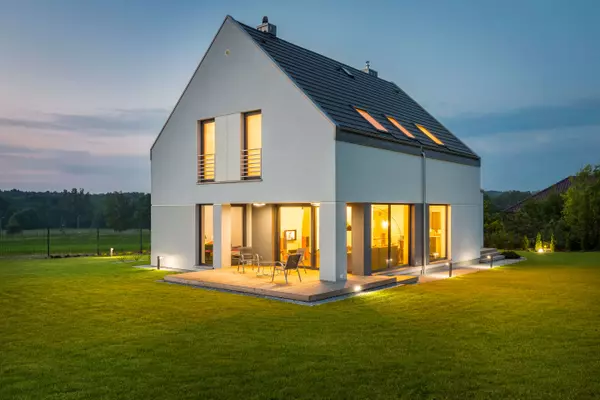How Upcoming Neighborhood Projects Could Affect Your Home Purchase
Zoning changes, new developments, and infrastructure projects are constantly reshaping communities.
If you’re buying in an up-and-coming area, expect to see plans for new highways, shopping centers, and mixed-use developments on the horizon.
When done well, these projects can boost property values and transform neighborhoods for the better. But when they’re not, they can bring traffic and noise, and that once-desirable neighborhood becomes decidedly less so.
Before you sign on the dotted line and buy a house, take time to learn what’s planned for the area and how those changes could affect your home’s value, both now and in the years ahead.
Link between local projects and home prices
In many cases, new infrastructure projects, such as improved roads, expanded sewer systems, or access to public water tend to boost land and home values. These upgrades make development easier and often unlock a property’s full potential.
When done with solid urban planning principles in mind, they can make surrounding neighborhoods more desirable and livable,” says Rick Tollakson, CEO of Hubbell Realty Company in West Des Moines, IA.
Jeff Cundiff, vice president of regional land development at Barge Design Solutions in Nashville, TN, echoes this view.
“When executed well, infrastructure projects such as new roads, parks, greenways, and utility expansions lay the foundation for smart growth,” he explains.
On the flip side, poorly planned rezonings or incompatible land uses—say, a concrete-mixing plant next to single-family homes—can drag down nearby property values. According to Tollakson, the outcome largely depends on factors like how well different land uses are separated, the quality of buffers and landscaping, and even natural elevation changes between sites.
In all cases, across the nation, we’re battling what we call NIBY-ism (Not in My Backyard) mentalities while welcoming a variety of infrastructure that supports our marketplace. In short, good planning lifts values, but bad planning can hurt them.
Steph Mahon, real estate agent and owner of Dwell New Jersey in Summit, NJ, explains that in Westfield, Summit, and other towns across North Central New Jersey, “redevelopment” has become a hot-button topic.
Some long-time residents express concern that new projects could compromise the small-town character and local charm they value. Others believe that thoughtful redevelopment is essential for the towns to evolve and remain vibrant in the years ahead.
Regardless of where one stands on the issue, home prices throughout these areas continue to rise steadily, driven by the lifestyle these communities offer—close proximity to New York City, lively downtowns filled with shops and restaurants, and convenient access to both international and private airports.
Todd Luong, real estate agent at REMAX DFW Associates in Frisco, TX, offers another perspective by shedding light on the upcoming Universal Kids Resort in Frisco, a massive development expected to significantly impact the surrounding areas.
While it is an exciting project for the region, it brings potential challenges for homebuyers, and there are several concerns to consider. The resort will likely attract many visitors, leading to increased traffic in and around Frisco.
“Homebuyers seeking a peaceful, suburban neighborhood might be put off by the prospect of a high-traffic tourist destination nearby. Even though the resort is still under development, the construction process and long-term traffic issues could lower property values in nearby residential areas,” explains Luong.
Increased tourism and overall congestion could affect the quality of life for homeowners in Frisco, making the area less desirable for some buyers and potentially lowering home prices in the surrounding neighborhoods.
“While some buyers might find the development appealing, the increased commercialization and density could make others wary. As the area becomes more commercialized, it could detract from the residential charm that has long made Frisco one of the most sought-after suburbs in North Texas,” adds Luong.
Looking at a home near new infrastructure? Here’s what to do
As a homebuyer, it’s all too easy to go down a rabbit hole of research—school systems, demographics, community programs, and beyond. Layer in potential zoning changes or future infrastructure projects, and suddenly you’re fixating on variables that are well outside your control.
Buying a home already involves countless important decisions, and it’s essential to maintain perspective.
“I always encourage buyers to take a 'big picture' approach: What kind of lifestyle matters most to you? What do you want your everyday life to look and feel like?” says Mahon.
When you focus on those priorities, you’ll naturally be drawn to the town and community that align with your values and aspirations—regardless of how future zoning or development may evolve.
Tollakson agrees but recommends you contact the local city or county planning department before you buy. This way, you can learn what’s in store for nearby underdeveloped land and avoid unwanted surprises in the future.
“Don’t rely solely on word of mouth, neighbors, or assumptions that open fields will 'stay that way.' Ask about the area’s future land-use plan and whether there’s been interest from developers or recent rezoning requests,” advises Tollakson.
City planning staff often have valuable insight into ownership patterns, proposed projects, and long-term visions for growth. A short conversation with them can reveal what your neighborhood might look like five, 10, or 20 years down the road—and whether that aligns with your goals as a homeowner. Do your homework—and go straight to the source.
Categories
Recent Posts










GET MORE INFORMATION

Stevan Stanisic
Real Estate Advisor | License ID: SL3518131
Real Estate Advisor License ID: SL3518131
